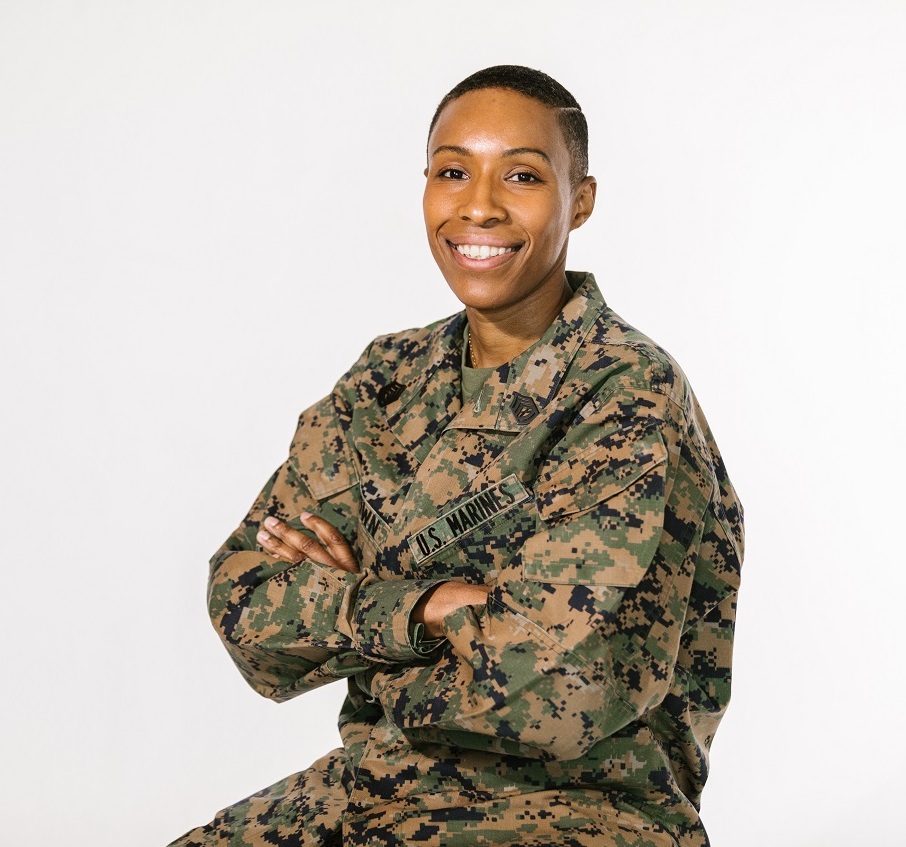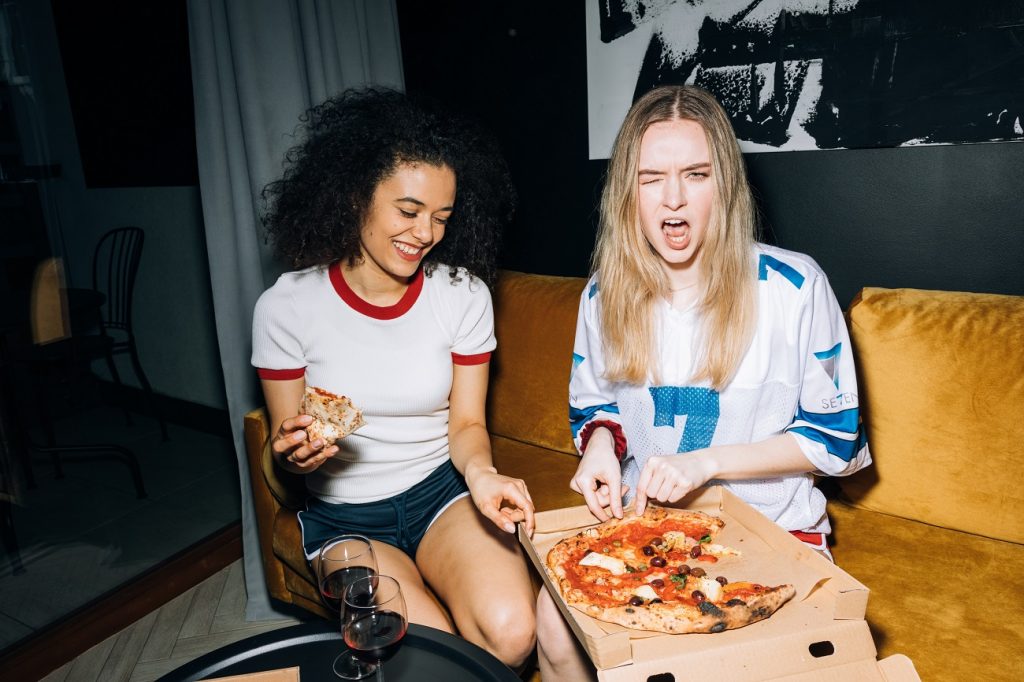4 Social Science Theories
Module Learning Objectives (MLO)
In this chapter, you will
- MLO 4.1 Identify foundational concepts and theories related to identity and dress. [CLO 1]
- MLO 4.2 Summarize the role of dress in identity development. [CLO 1]
- MLO 4.3 Analyze identity and dress with social science theories and concepts. [CLO 2]
- MLO 4.4 Analyze the norms that influence your own identities and dress. [CLO 4]
There are thousands of social science theories that relate to and help explain dress, appearance, and identity. This chapter describes a few of these.
Role Theory
A role is a position a person occupies in a social relationship (Biddle & Thomas, 1966). Roles require and shape
- behavior associated with the role, including dress
- knowledge and values needed to perform the role
- status.
For example, police officers have uniforms that must be worn according to regulations, as well as codes of behavior guiding their performance of this role. They need to learn laws and procedures to perform the role. If a police officer does not value and take pride in their role, they are not likely to perform well.
Many of our roles have less specific dress regulations. University students, for example, display some variety in their dress, but the norm on campus tends to be fairly casual and comfortable. Students usually dress recognizably different from faculty and administrators.
Status: position in relation to other positions. These include
- complementary positions within a general role type, such as
- family roles of mom, dad, child, grandma, parent
- gender roles of man, woman, nonbinary person
- positions on a continuum, where someone ranks higher than another in terms of wealth, authority, or prestige. Examples include
- owner, manager, assistant manager, salespersons in a store
- upper, middle, and lower socioeconomic classes.
Role norms are expected sets of behaviors for persons holding roles and status (Biddle & Thomas, 1966). Role norms regulate behaviors including dress, demeanor, and expressions of politeness. For example, we expect medical doctors to dress in specific attire in a hospital or at the office. If a doctor violates these expectations (working in shorts and a T-shirt, for instance), some patients may perceive them as less competent or serious. Other patients may find the violation of expectations to be amusing in this era of lax dress rules.
Purpose of Role Dress
- learning a role
- performing a role
- identify others performing a role
- shape reactions of others
- assist in role change
Role dress helps an individual take on a role and be perceived by others as fitting that role. If a person looks like they have a role, other people are likely to assume that the person has the skills and knowledge to carry out the role. Solomon (1983) proposed that
- people who are early in their careers often dress more in accordance with role dress expectations. Responses from coworkers and clients to the role-appropriate dress help the newcomer to feel more adept in and a part of the role while learning it.
- as people become more experienced and recognized as competent, they are more likely to feel comfortable relaxing the dress rules or exploring more variety in role appearance.
Research supports these propositions for many, but not all, roles and individuals.
Some restrictions of role adoption include (Horn & Gurel, 1981)
Some restrictions of the ways individuals adopt rules are
- Intrinsic: An individual lacks resources to acquire role props and settings. Resources include money and time.
Example: Most of us do not have the wealth or connections to be wealthy jetsetters who attend exclusive parties with the rich and famous.
- Moral: An individual has morals or values that keep them from performing behaviors essential to a role.
Example: Due to misalignment with morals about selling sex for money, an individual does not want to dress like a prostitute and perform that role, even if it might be affordable to dress like a prostitute.
- Organic: One’s body does not fit the appearance requirements of the role.
Example: Many women do not fit beauty pageant “appearance requirements.”
- Cultivation and socialization: The individual lacks the knowledge and training to take on a role.
Example: A person might be able to don a lab coat and stethoscope, but most could not effectively carry off the role of a medical doctor when the time came to demonstrate expertise about medicine. In many US hospitals, physician interns are required to wear shorter, blazer-length white coats while licensed doctors wear knee-length white coats. The shorter coats indicate doctors-in-training who do not yet have full credentials to practice medicine (Coleman, 2000).
Identity is defined to a great extent by the roles we play (Kaiser, 1990). In a sense, we have multiple identities because we all have many roles.
- You may be a male student in your early twenties and have a part-time job; go on dates; and be a brother, a son, an avid bicyclist, and Latino American. Your dress may vary greatly or slightly in these roles, and it may reflect several of these role identities at one time.
- Your total identity is a composite of all your roles as well as your unique personality traits and habits.
Role Conflict

In carrying out some roles, individuals may experience conflicts. An inter-role conflict, or a conflict between two roles, may occur when an individual finds that two sets of role demands are not always compatible. Appearance can help solve role conflicts if the individual changes clothes for each role or wears the attire for the most demanding role.
For example, a parent who is a marketing director prefers to change clothes after arriving home to spend time with their infant, who throws food around and perhaps spits up on the parent’s clothes. But work stress and time limitations may require the individual to be a parent sometimes while wearing their work suit.

In contrast, an intra-role conflict is one that conflicts within a role due to changing expectations for that role across different groups in a society. In these situations, the role player may change clothes with differing audiences or limit the audiences with access to them.
An example of intra-role conflict might be a medical doctor who prefers to wear semicasual street clothes when seeing patients at the office. They do this to seem more approachable and easier to talk to. But ome older patients expect to see the doctor in a lab coat, so the doctor may put on a traditional white doctor’s coat when seeing older patients (Blumhagen, 1979).
Role embracement vs. role distance (Goffman, 1959)
An individual who takes on a role and learns to embrace it as part of identity is more likely to accept role-appropriate clothing than an individual who has a role but feels distanced from it or from societal definitions of the roles.
Conformity
Conformity is a change in an individual’s behavior or attitude to achieve consistency with real or imagined group norms (Kaiser, 1990).
Watch this short video to demonstrate the power of cultural norms
To view a transcript for the video above, download this file: Social Conformity Brain Games Video Transcript [DOC]
Dress is an outward sign of conformity. Conformity
- faciliatates a sense of identification, belonging, definition of self, role embracement
- supports safety or comfort in group acceptance
- fosters group solidarity, peer bonding; conformity through dress defines group boundaries by identifying who is in a group and who is not
- indicates similarity, which is conducive to attraction
- emphasizes social inclusion vs. social uniqueness.
Conformity has its negative outcomes. It can be boring and monotonous. Too much required conformity can stifle creativity. Some people are more prone to conformity through dress, while others are more interested in differentiating themselves from others. Some basic personality characteristics may incline individuals to be (Storm, 1987)
Prone to conformity
- shows feelings of inadequacy or incompetence
- outer, other-directed
- passive
- less tolerant of ambiguity
- dogmatic or wants absolute rules
- demonstrates need for social acceptance
Prone to differentiation
- shows feelings of competency
- inner, self-directed
- less passive
- more tolerance for ambiguity
- less dogmatic
- demonstrates less need for social acceptance
Uniforms (extreme conformity) (Joseph & Alex, 1972)
Check out this object video from ISU’s Textiles and Clothing Museum Collection. The video features a 1930s Girl Scout uniform with patches on the sleeve demonstrating the wearer’s various achievements in the program.
Uniforms
- indicate the prestige level of the wearer
- symbolize skill level attained by the wearer
- facilitate efficiency and organizational control
- suppress the expression of individuality and idiosyncrasy
- encourage group behavior and thinking rather than focus on the self.
Uniformity more likely for role dress when the role requires special expertise and extensive training (i.e., hospital surgeons)

- involves safety or security control (i.e., armed forces, police)
- requires dress that protects the body or facilitates task performance (i.e., fire fighters)
- benefits from group or team solidarity and identification (i.e., players on sports teams)
- establishes brand or organization image (i.e., McDonald’s servers, Target employees)
- enforces identity control (i.e., prisoners).
In coercive total institutions such as prisons, uniforms are used to (Goffman, 1961)
- strip personal identity to force an inmate to become part of the system
- help (i.e., force) the inmates to leave their independent lives outside.
Symbolic Interactionism—Public, Intimate, and Secret Self
According to Eicher (1981), there are three ways to think about the self: the public, intimate, and secret selves.
The public self is the part of a person in front of others in public, including those outside of the friend or family network. Therefore, the public self is usually a part of the self that one is comfortable sharing in a broader sense. For example, some people are comfortable sharing their occupations. That is, if an individual works as a public transportation bus driver, they might wear their uniform to the grocery store after work without feeling uncomfortable sharing this part of who they are. However, if someone has a stigmatized occupation, such as a sex worker, they may conceal this from their public self-presentation (Oselin, 2018).
The intimate self is a part of the self that individuals share only with those close to them, such as friends or family. For example, an individual might be more relaxed after work and wear casual or pajama-style garments around the house in front of their family members.

Finally, secret self refers to aspects of the self that one does not share with others. For example, one transwoman describes how she would sometimes dress in female-gendered garments without letting others know (Coates, 2016). Trans people experience significant discrimination (National Center for Transgender Equality, 2022); therefore, the transition and coming-out process for trans people is complex and may include a variety of experiences, such as experimenting in the secret-self space with different clothing styles.
According to symbolic interaction theory, individuals negotiate their appearances (and public and intimate selves) in social interactions (Goffman, 1959). In this theory, the program is a term that refers to your response to your own appearance. In the process of the program, you evaluate your own appearance based on how you look in the mirror and/or how you think others might perceive you. The concept of the generalized other is what you expect others to think of a particular identity. For example, if you are a librarian, you might wear a cardigan and glasses, as these are sometimes stereotypes associated with librarians or how individuals might assume librarians dress. In symbolic interaction theory, the review is also a part of identity negotiations in symbolic interaction theory. The review is others’ evaluation of one’s appearance. People can give both verbal and nonverbal reviews. Verbal examples include “Wow, I love that shirt” or “That makes you look terrible.” Nonverbal reviews include, for example, a person holding their purse closer to their chest as they walk by you; Black men frequently report this experience (Lowe, 2000).
Focused Example: Prison Uniforms
The Stanford Prison Experiment is a famous study that was conducted at Stanford University in the 1970s. Watch this short film and pay attention to how dress was used to strip inmates of their identities and to enable the guards to enact control.
To view a transcript for the video above, download this file: Stanford Prison Exeriment Video Transcript [DOC]
References
Biddle, B. J., & Thomas, E. J. (1966). Role theory: Concepts and research. New York: Wiley.
Blumhagen, D. W. (1979). The doctor’s white coat: The image of the physician in modern America. Annals of Internal Medicine, 91, 111–116.
Coleman, C. (2000, February 2). Just playing doctor? Shorter coats make residents feel naked. Wall Street Journal..
Eicher, J. (1981). Influences of changing resources on clothing, textiles, and the quality of life: Dressing for reality, fun, and fantasy. Combined Proceedings, Eastern, Central, and Western Regional Meetings of Association of College Professors of Textiles and Clothing, 36–41.
Goffman, E. (1959). The presentation of self in everyday life. Garden City, NY: Doubleday Anchor Books.
Goffman, E. (1961). Asylums: Essays on the social situation of mental patients and other inmates. Garden City, NY: Doubleday.
Horn, M. J., & Gurel, L. M. (1981). The second skin (3rd ed.). Boston: Houghton Mifflin.
Joseph, N., & Alex, N. (1972). The uniform: A sociological perspective. American Journal of Sociology, 77, 719–730.
Kaiser, S. B. (1990). The social psychology of clothing. New York: Macmillan.
Solomon, M. R. (1983). The role of products as social stimuli: A symbolic interactionism perspective. Journal of Consumer Research, 10, 319–329.
Storm, P. (1987). Functions of dress: Tool of culture and the individual. Englewood Cliffs, NJ: Prentice-Hall.

Social Science Theories Case Study
Step One: Become familiar with the case study.
- The case study attached below is a Word document and can be downloaded. It includes the task, evaluation, and template for the case study:
Social Science Theories Case Study [DOC]
Step Two: Submit your complete assignment on Canvas.
- Format your document.
- Remember to check the submission against the rubric.

